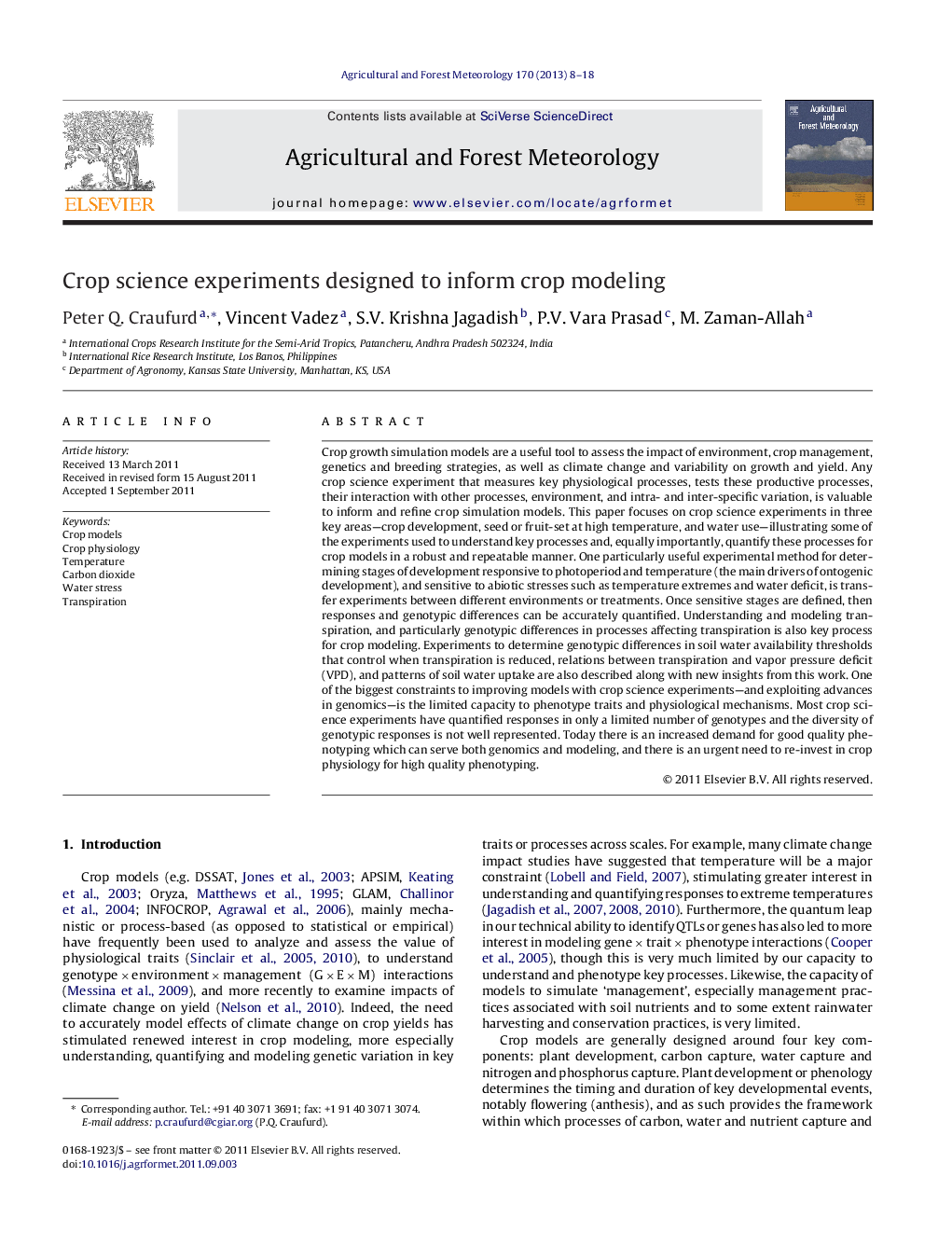| Article ID | Journal | Published Year | Pages | File Type |
|---|---|---|---|---|
| 81817 | Agricultural and Forest Meteorology | 2013 | 11 Pages |
Crop growth simulation models are a useful tool to assess the impact of environment, crop management, genetics and breeding strategies, as well as climate change and variability on growth and yield. Any crop science experiment that measures key physiological processes, tests these productive processes, their interaction with other processes, environment, and intra- and inter-specific variation, is valuable to inform and refine crop simulation models. This paper focuses on crop science experiments in three key areas—crop development, seed or fruit-set at high temperature, and water use—illustrating some of the experiments used to understand key processes and, equally importantly, quantify these processes for crop models in a robust and repeatable manner. One particularly useful experimental method for determining stages of development responsive to photoperiod and temperature (the main drivers of ontogenic development), and sensitive to abiotic stresses such as temperature extremes and water deficit, is transfer experiments between different environments or treatments. Once sensitive stages are defined, then responses and genotypic differences can be accurately quantified. Understanding and modeling transpiration, and particularly genotypic differences in processes affecting transpiration is also key process for crop modeling. Experiments to determine genotypic differences in soil water availability thresholds that control when transpiration is reduced, relations between transpiration and vapor pressure deficit (VPD), and patterns of soil water uptake are also described along with new insights from this work. One of the biggest constraints to improving models with crop science experiments—and exploiting advances in genomics—is the limited capacity to phenotype traits and physiological mechanisms. Most crop science experiments have quantified responses in only a limited number of genotypes and the diversity of genotypic responses is not well represented. Today there is an increased demand for good quality phenotyping which can serve both genomics and modeling, and there is an urgent need to re-invest in crop physiology for high quality phenotyping.
► Development, heat tolerance and transpiration are key processes for crop models. ► We describe types of experiments used to understand and quantify these processes. ► Transfer experiments are used to define sensitive stages of development to stresses. ► Mini-lysimeter experiments quantify transpiration and key thresholds for water use. ► More investment in physiology for phenotyping is required for modeling.
